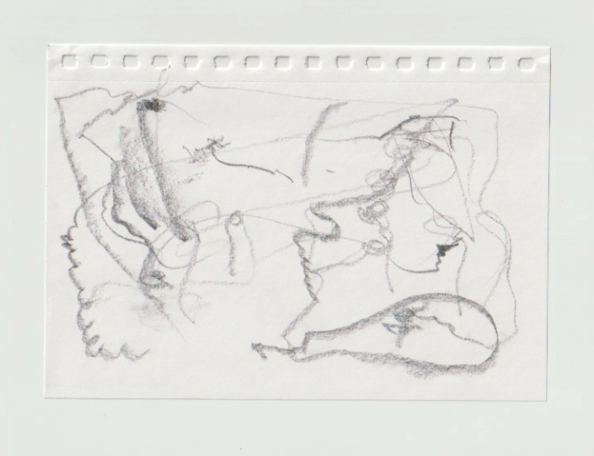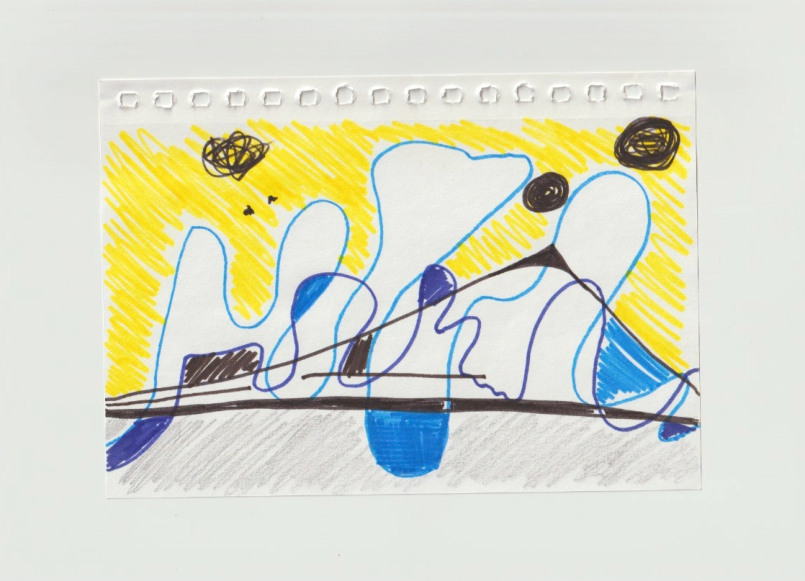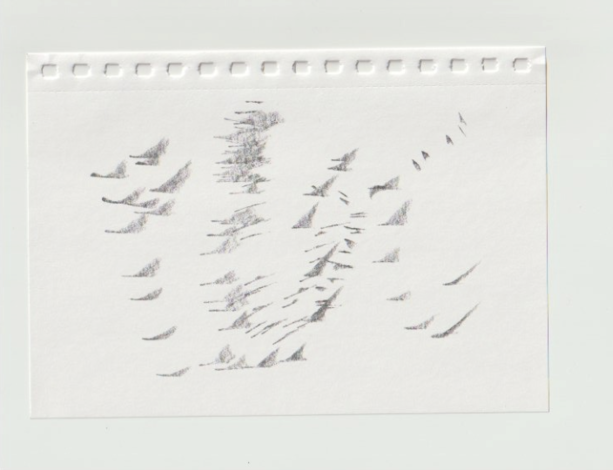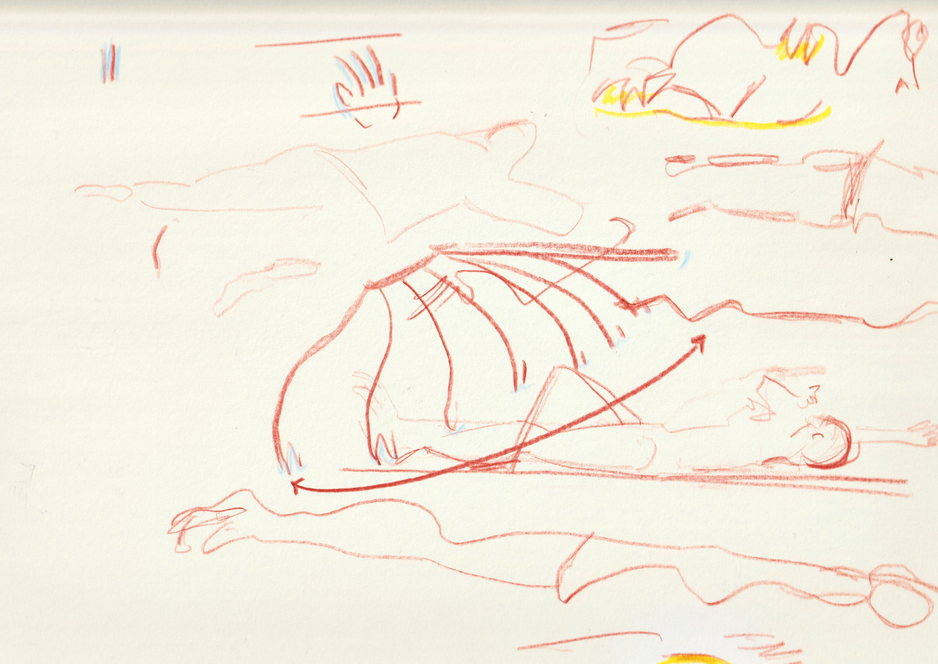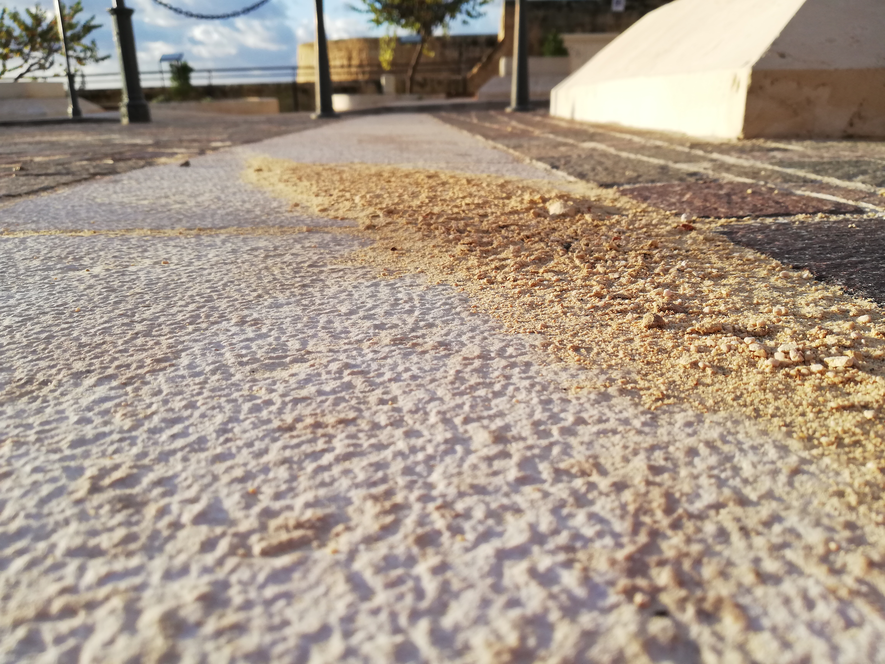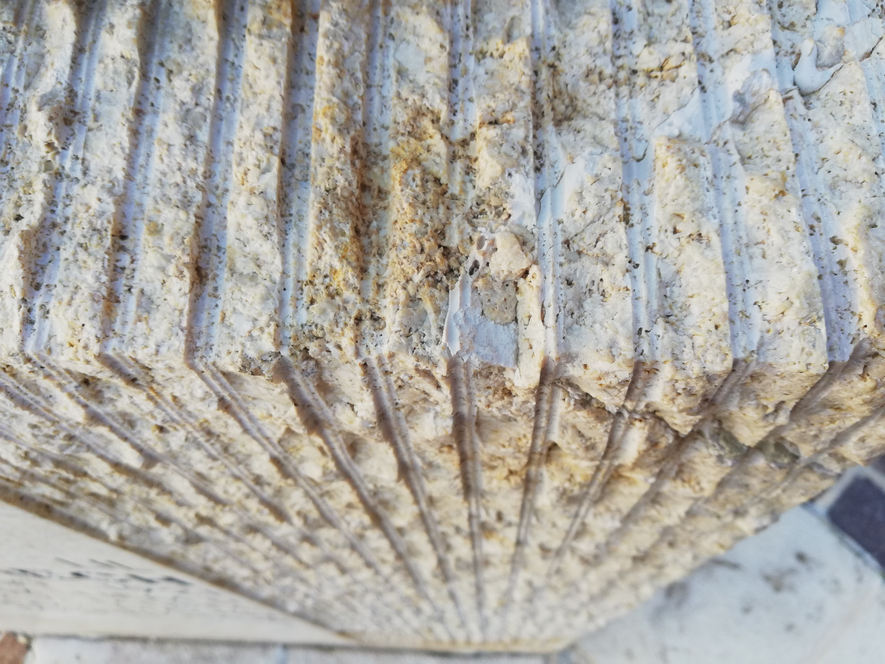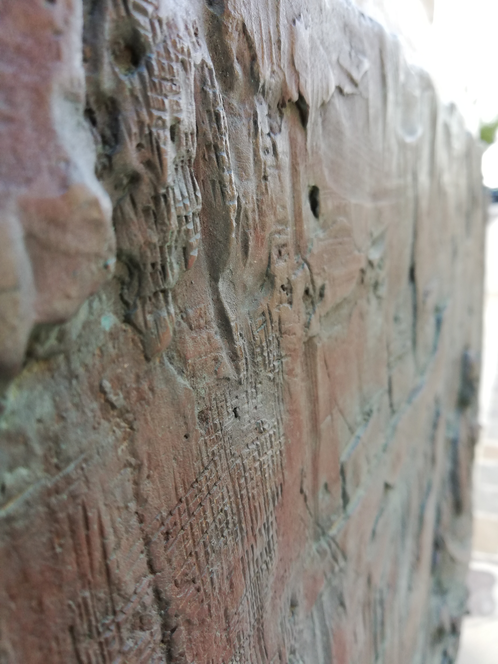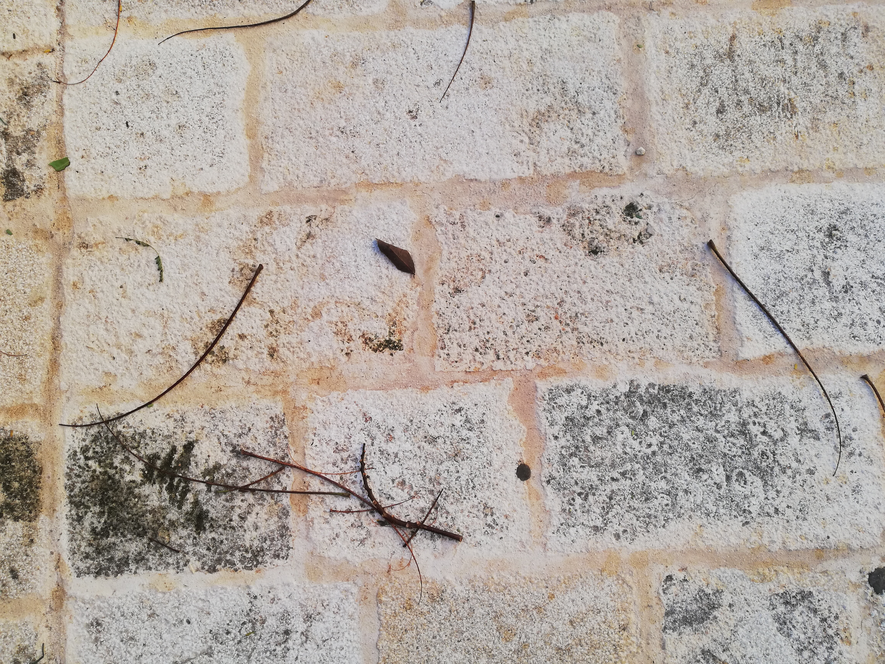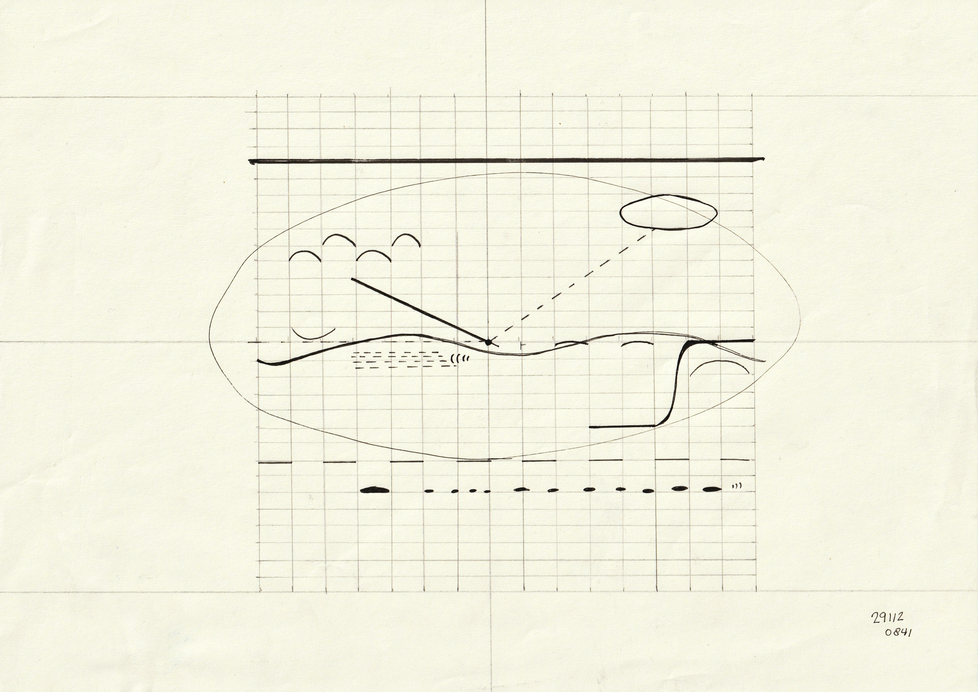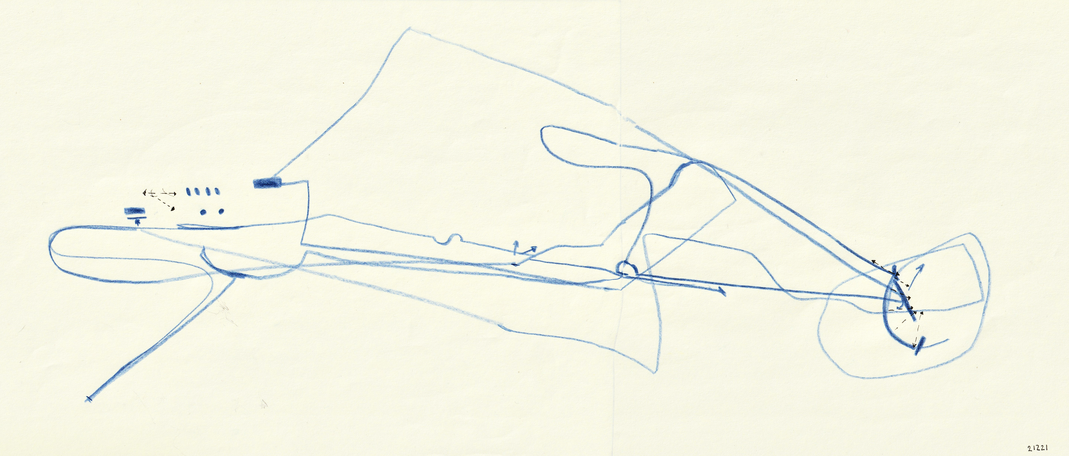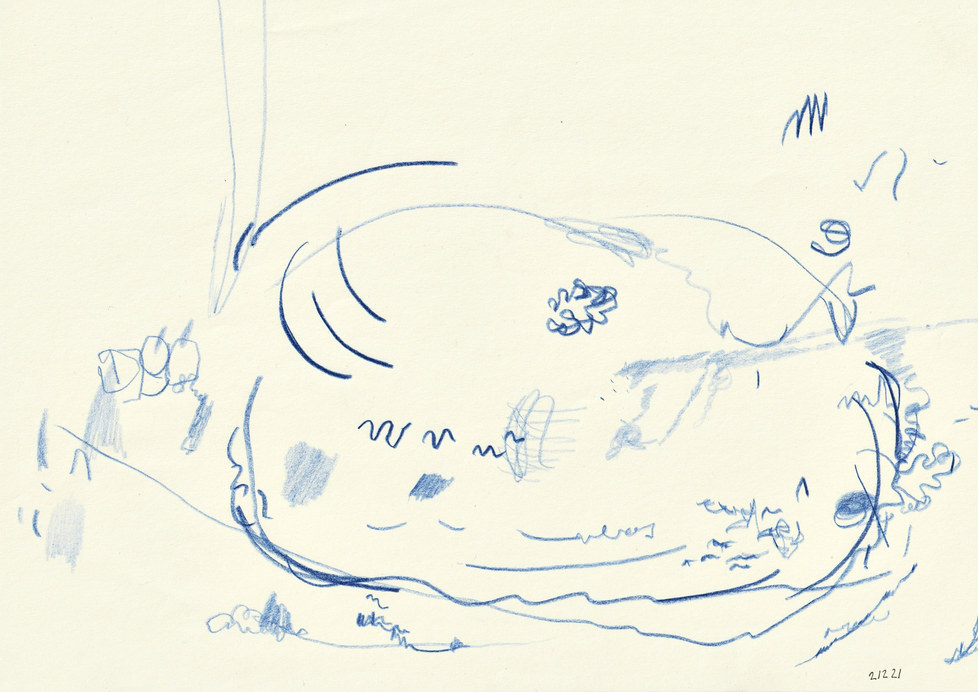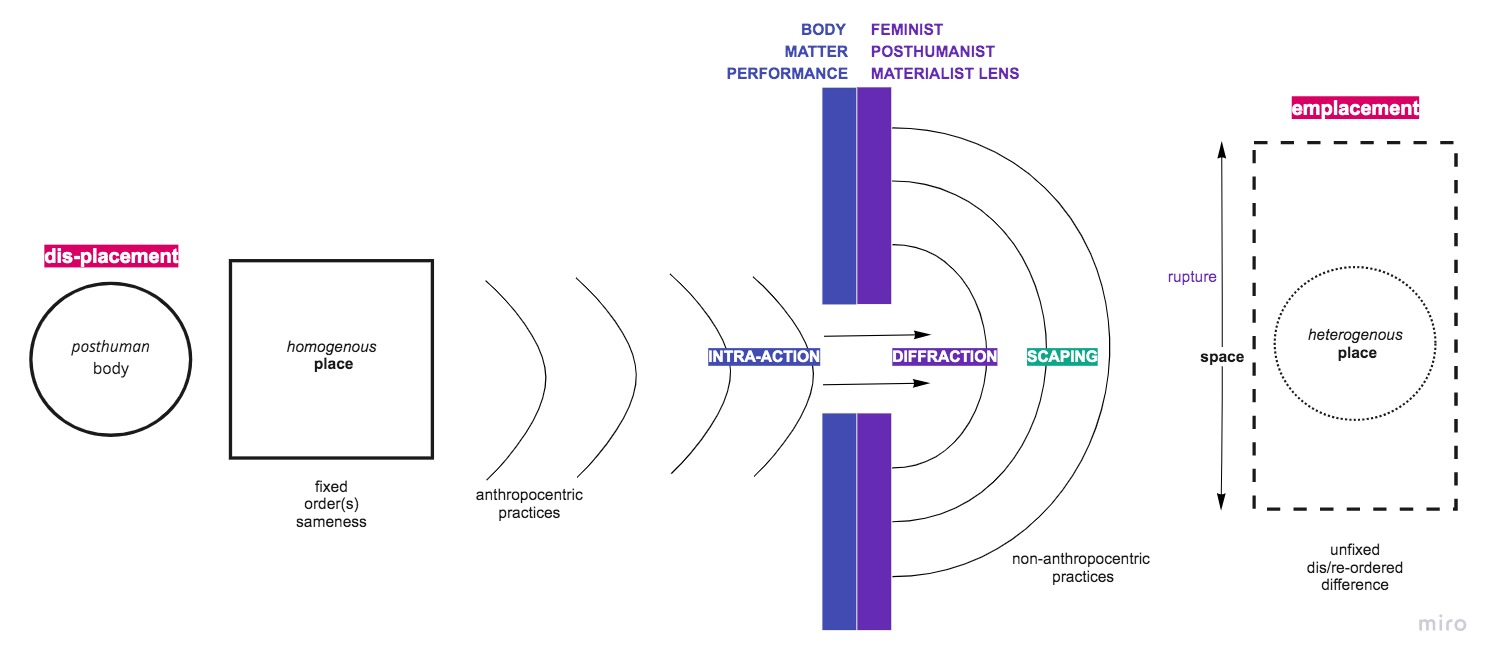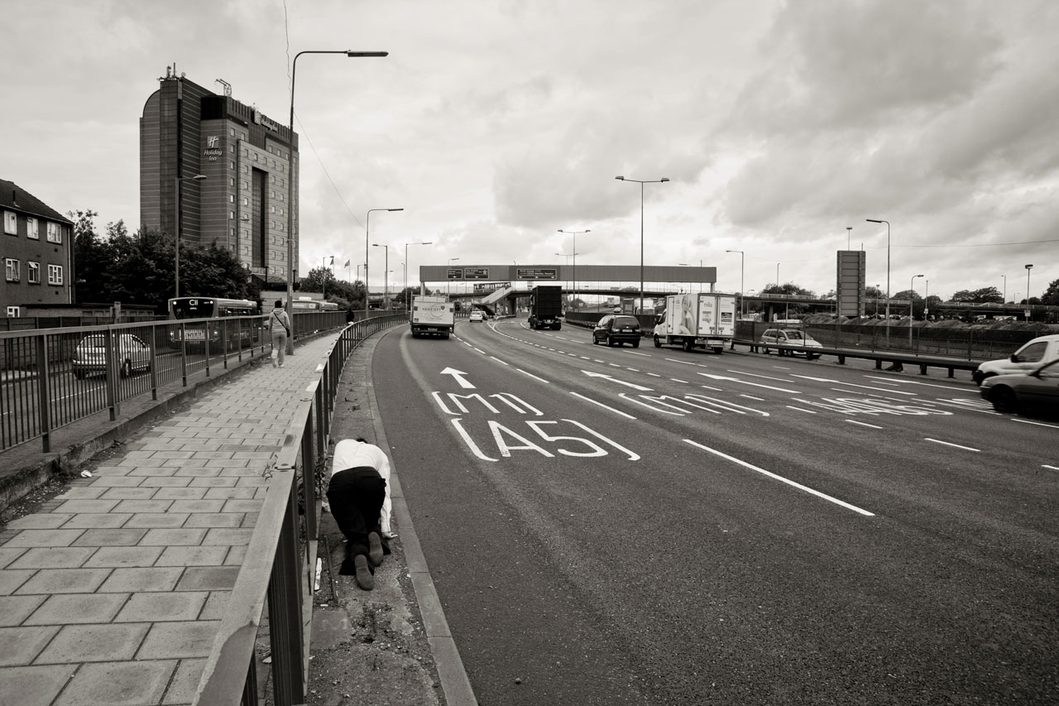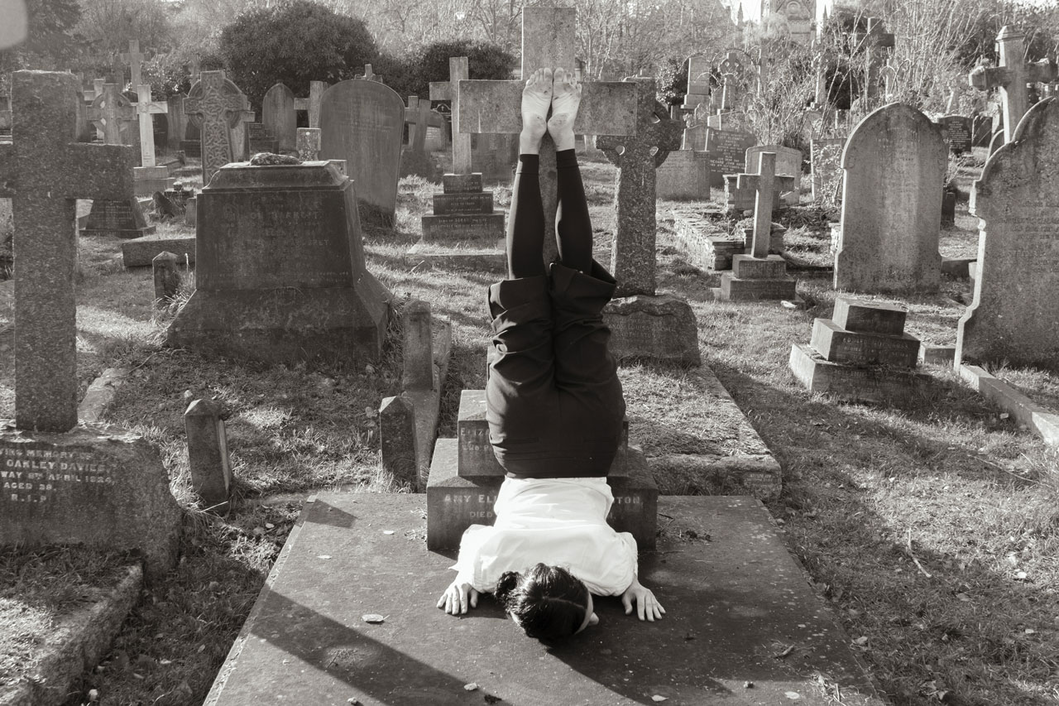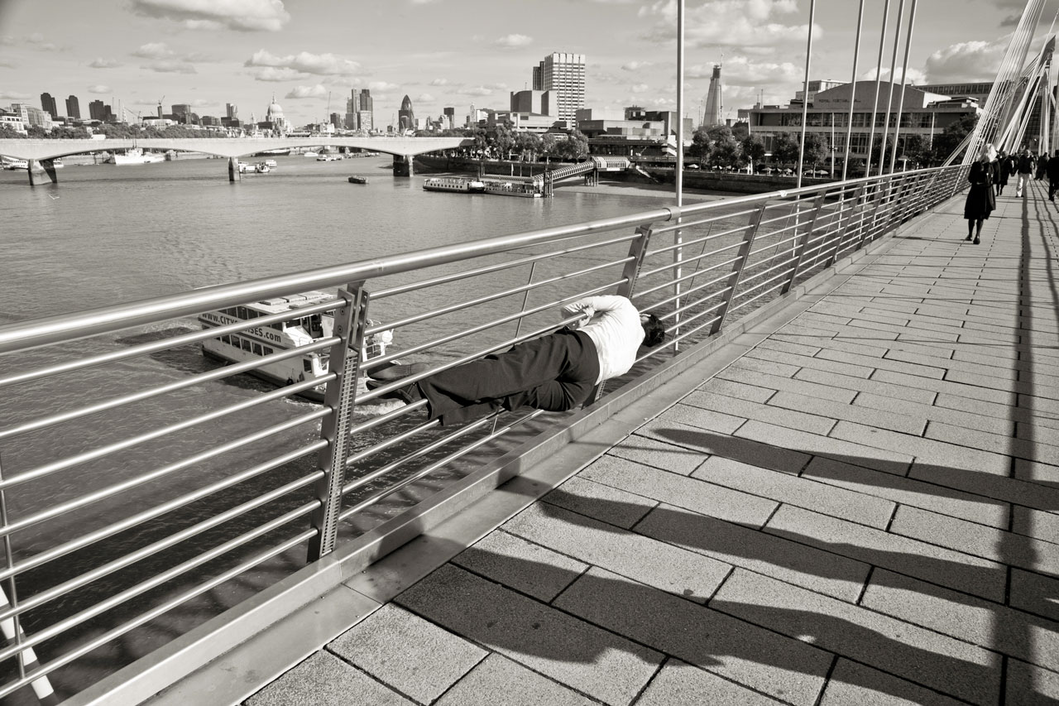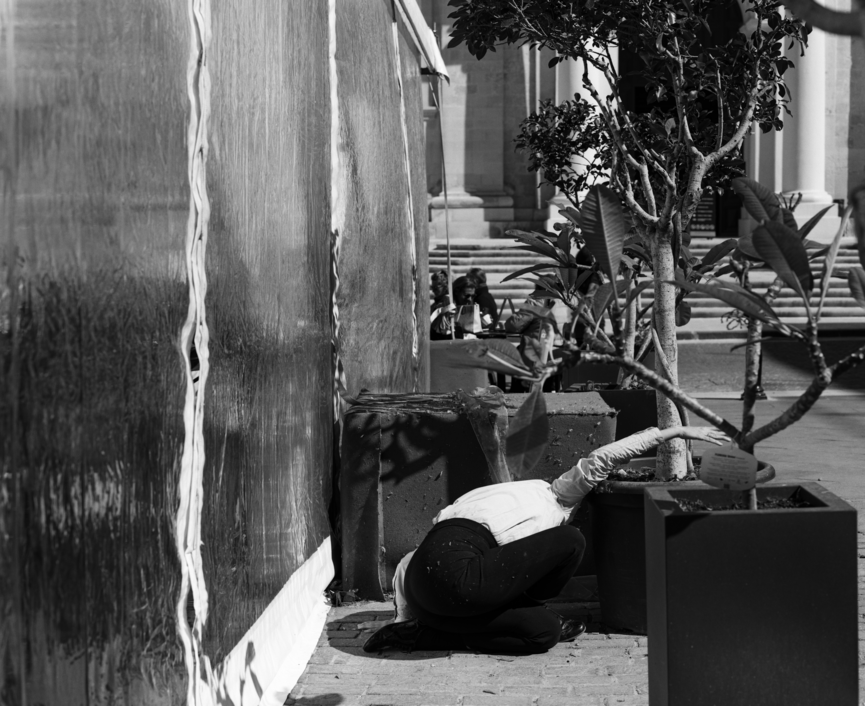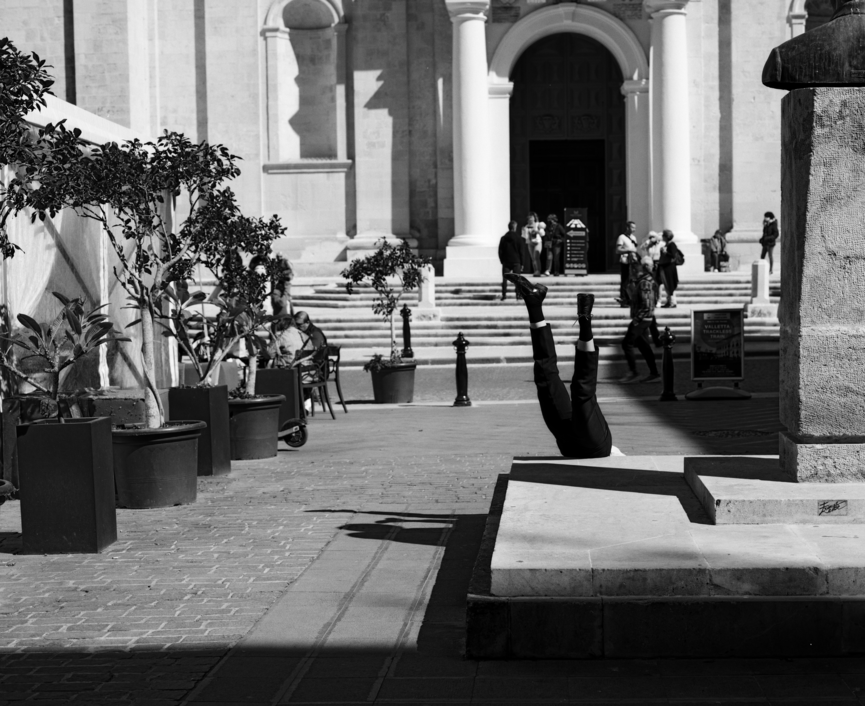Introduction
This artistic research project draws from feminist, new materialist, posthumanist perspectives, extending my contemporary dance practice out of the studio, and into public space. It is motivated by my urgent will to find new, more response-able ways of practising and performing as a (post)human in the Anthropocene.
In the first months of research, I investigated human relations with the material components of peri-urban sites, initially as solo experiments, and subsequently in collaboration with a visual artist. In the second phase, the camera was brought in, and hence also a videographer as collaborator, researching with-in a political site in Valletta. We applied this knowledge to the third phase to develop a series of screendance performances in anthropocentric landscapes, with 8 different performers in 7 different sites: the wanderMust series.
All throughout, I have attempted to co-create with the human and more-than-human collaborators within these public spaces.
Future & Ambitions
- Developing camera and editing skills, including dronework
- movement for the macro lens
- broader collaborations beyond Malta
- more transdisciplinarity in research, possibly including healthcare industry due to pharmacy background
- further dissemination of practice through workshops, festivals
- publication of research in academic and artistic contexts
- establishing a PPS thread in Malta.
Cultural Entrepreneurship
Strategizing
- unique position in local context: dance and public space as practice, especially screendance within local landscapes, and new materialist philosophy
- working to build bridges beyond Malta
- developing three threads of professional practice:
- academic
- creating artistic work (e.g. in various exhibitions)
- supporting artistic projects as a consultant
Networking
- already established small international network including UK, Netherlands, Denmark, Belgium, Croatia, Spain, Germany, Greece, Italy, Malaysia
- focus in period 3 has been mostly local
- building confidence to expand more refined and distinctive practice through network, across different contexts.
Performance in Different Professional Roles
As a peer
- actively engaged and curious within research, discourse
- active and responsive within co-creation processes, able to take the lead, facilitate conversations in an inclusive manner.
As a dance artist
- own performance practice can be given more attention
- slowly developing wider technical skills for camerawork and digital presence
As a student
- dedication and discipline within assignments
- commitment to improving communication within different contexts
- developing skills to offer and receive critical feedback
- responsive to feedback and coaching
- developing self-management tools to curb perfectionism
- engaged, curious, and invested during bootcamps
- developing skills to be comfortable with the unknown, to welcome it as a creative space
- developing skills to trust creative processes and release expectations.
Artistic Practice, in relation to Public Space
- Strengthened theoretical foundation
- developing links with artistic practice
- engaged and motivated in public space discourse
- shifting from quiet, peripheral spaces to iconic, political site
- shifting from more individual practice to collaboration with human and more-than-human agents
- dissemination of practice is slow, reducing visibility and opportunities for connection.
Journey Overview
- Hyperdevelopment in Malta
- Questioning non-anthropocentric ways of engaging with environments
- application proposal involving live performance of Symbiocene and Chthulucene
- shifted to investigating alternate practices vs. trying to make things different
- Elimination of Albrecht's Symbiocene, in favour of Haraway's Chthulucene
- leading to selection of New Materialist philosophy as new standpoint
- new ethics, aesthetics, ontology, epistemology and methodological approach
-
- production of bodies
- production of spaces and places
- a new vision for public space
- re-constituting boundaries of bodies and matter through feminist principles
- turn away from linguistics, in line with choreographic and embodied perspectives of sited dance practice.
- Initial goal to build a set of movement scores and live performances
- evolved to a methodological approach
- screendance was secondary, though now primary
- less participatory than orginally planned.
Methodological Outcomes
A co-creation process
1. Meeting to discuss and choose a place
2. Meeting on site
3. Attention practices (through Gansterer et al., 2017)
4. Movement practices (though Hunter 2021, and Gansterer et al., 2017)
5. Spatial explorations (through Hunter, 2021)
6. Landing practices (through Gins & Arakawa in Hunter, 2021) filmed with macro wide angle lens.
Theoretical Overview
- Donna Haraway, Karen Barad, Rosi Braidotti
- questioning how these principles can be connected to sited dance practice
- experiments dancing with-in theoretical concepts
- directing focus to body, Alaimo's "transcorporeality", Rogowska-Stangret's "body"
- questioning boundaries, de-, and re-constitution of bodies in relation to public space
- consideration of all bodies, human and more-than-human
- landing on Barad's theory of Posthuman Performativity (2003).
Posthumanism
What can it do for human-environment relations?
What is it doing in my artistic practice?
Material Outcomes
1. Embodied maps
2. Drawings
3. Photos
4. Videos
5. Scores
6. Screendance performance material
- my performances in a political site
- performances with collaborators in anthropocentric (land)scapes
- one short clip of multiple journeys
- series of single performance journeys.
Artistic Means & Methods
- From theatre and studio-based contemporary dance practice to site-based dance practice in public space
- "corpo-material engagement"
- communication this engagement beyond individual experience, involvement of collaborators and involvement of language
- collaboration with a visual artist to articulate through different means
- "embodied cartography" (Braidotti)
- shifting context from "peri-urban" space to political, iconic place
- shifting from live performance to screendance performance.
- Screendance performance practice encapsulating:
- sited dance practice
- choreography
- performance
- artistic direction
- as co-creative processes.
4. Scaping Posthuman Places
- Barad's "agential realism" (2003), Ingold's "Imagining Landscapes", Tuin & Verhoeff's "-scapes" (2022)
- public space as a scape, open to scaping
- Kloetzel's research and artistic practice exploring Augé's space, place, and non-place
- Kramer's "embodied emplacement" research and practice
Process:
- anthropocentric landscape as a homogenous place
- diffracting through the body by enacting agential cuts based on posthuman perspectives
- re-configuring of boundaries to produce space within the homogenous place
- homogenous anthropocentric place becomes a heterogenous place with posthuman qualities.
Haddad's "Make my Skin" project, setting the body "out of place" to find its place.
3. Towards an understanding of the posthuman body
- Questioning the boundaries of human, nonhuman, more-than-human, and living, nonliving agents of public space
- Barad's "Posthuman Performativity", Braidotti's "The Posthuman" and "Posthuman Feminism", Victoria Hunter's theoretical perspectives and artistic practice in "Site, Dance & Body".
- Boundaries, skin, touch
- body as subject and object, as apparatus for knowledge production
- moving from interactions to "intra-actions" (Arlander, Barad)
- agency, agential cuts
- techno-mediation of the body
- Heike Salzer's - the "somatic camera" (2019), incorporating the visceral experience of the videographer within the site into the filming process.
1. Becoming a posthumanist researcher
- "Staying with the trouble" (Haraway, 2016)
- “[caring] for the state of the world, and [wanting] to intervene productively in it" (Braidotti 2022, p.9)
- affective, situated, embodied perspectives - foundation of sited dance practice (Hunter, 2021)
- " 'we' are not the same but are in this together" (Braidotti 2022)
- response-ability (Barad, 2003)
- solidarity, care, and compassion.
2. Developing diffractive techniques
- "Diffraction" as an operating principle, which supports difference of over sameness (Barad, Haraway)
- How to apply this concept to sited dance practice?
-
- nociting differences
- generating differences
- in method and practice, as well as reflection
- "tentacular" movement (Haraway, 2016), research and process is always in becoming
- camera as a diffractive tool, diffracting bodies and matters, applying prismic agential cuts, subverting power relations.
Bibliography
Alaimo, S. (2010). Bodily Natures, Sciences, Environment, and the Material Self. Indiana University Press.
Albrecht, G. A. (2015, December 17). Exiting The Anthropocene and Entering The Symbiocene. | Psychoterratica. Glenn A Albrecht. Retrieved June 9, 2022, from https://glennaalbrecht.wordpress.com/2015/12/17/exiting-the-anthropocene-and-entering-the-symbiocene/
Arlander, A. (2012). Performing Landscape - Notes on Site-specific Work and Artistic Research (Texts 2001-2011). Theatre Academy Helsinki, Performing Arts Research Centre.
Barad, K. (n.d.). Posthuman Performativity: Toward an Understanding of How Matter comes to Matter. Signs, 28(3), 801-831. JSTOR. https://doi.org/10.1086/345321
Braidotti, R. (2018, May 4). A Theoretical Framework for the Critical Posthumanities. Theory, Culture & Society, 36(6), 31-61. 10.1177/0263276418771486
Braidotti, R. (2022) Posthuman Feminism. Wiley.
Cocker, E., Greil, M., & Gansterer, N. (Eds.). (2017). Choreo-graphic Figures: Deviations from the Line (M. Greil, Trans.). De Gruyter.
Gibson, J. J. (1962, November). Observations on Active Touch. Psychological Review, 69(6), 477-491. https://blogs.iad.zhdk.ch/embodied-interaction-advanced-hs11/files/2011/11/gibson-1962-observations-on-active-touch.pdf
Haddad, O. (2016). MAKE MY SKIN. Embodimenta. Retrieved June 9, 2022, from https://www.embodimenta.com/portfolio/make-my-skin/
Haraway, D. (1985). A Manifesto for Cyborgs: Science, Technology, and Socialist Feminist in the 19802. University of Michigan.
Haraway, D. J. (2016). Tentacular Thinking: Anthropocene, Capitalocene, Chthulucene. In Staying with the Trouble: Making Kin in the Chthulucene (pp. 30-57). Duke University Press.
Hunter, V. (2021). Site, Dance and Body: Movement, Materials and Corporeal Engagement. Springer International Publishing. 10.1007/978-3-030-64800-8
Kloetzel, M. (2015). Site-specific dance in a corporate landscape: Space, place, and non-place. In V. Hunter (Ed.), Moving Sites: Investigating Site-specific Dance Performance (pp. 239-254). Routledge.
Kramer, P. (2015, May). Dancing Materiality: A Study of Agency and Confederations in Contemporary Outdoor Practices [Unpublished PhD Thesis]. https://curve.coventry.ac.uk/open/file/95453abd-9ad9-4154-bd46-7affd402bba7/1/Kramer%202015.pdf
Ringrose, J., Warfield, K., & Zarabadi, S. (2020). Introducing Feminist Posthumanisms/New Materialisms Educational Research: Response-able Theory-Practice- Methodology. Feminist Posthumanisms, New Materialisms and Education, 1-15. academia.edu. https://doi.org/10.4324/9781351186674-1
Rogowska-Stangret, M. (2017, July 21). Body. New Materialism. Retrieved June 9, 2022, from https://newmaterialism.eu/almanac/body/body.html
Salzer, H. (2019). Wanderlust in Screendance: The body in landscapes [PhD Thesis]. heikesalzer.wixsite.com. Retrieved January 12, 2022, from https://heikesalzer.wixsite.com/salts/research
Tsing, A. L., Gan, E., Swanson, H. A., & Bubandt, N. (Eds.). (2017). Arts of Living on a Damaged Planet: Ghosts of the Anthropocene. University of Minnesota Press.
Tuin, I. v. d., & Verhoeff, N. (2022). Critical Concepts for the Creative Humanities. Rowman & Littlefield Publishers.
